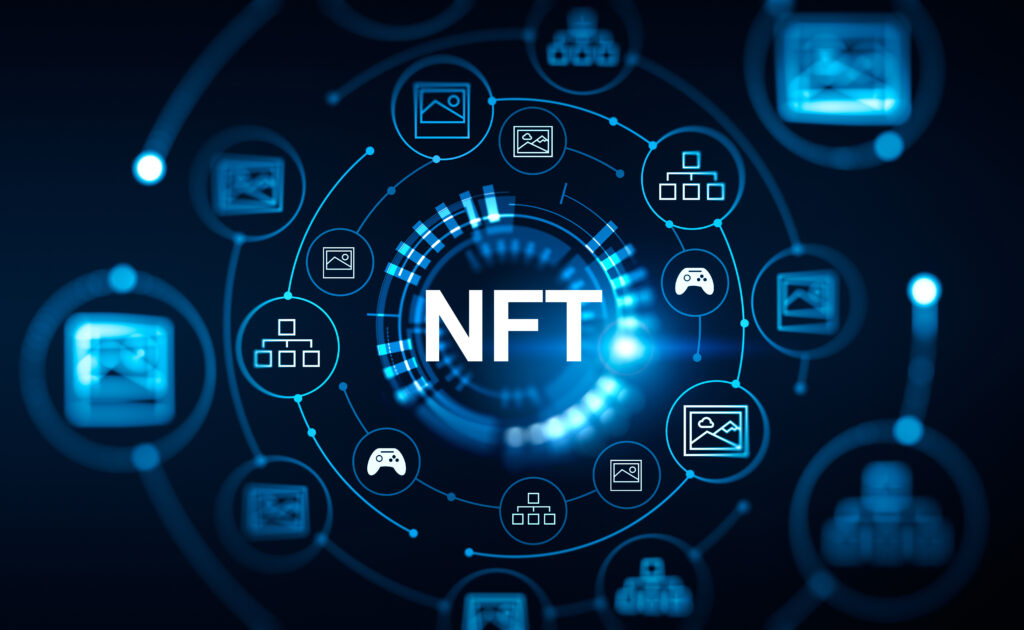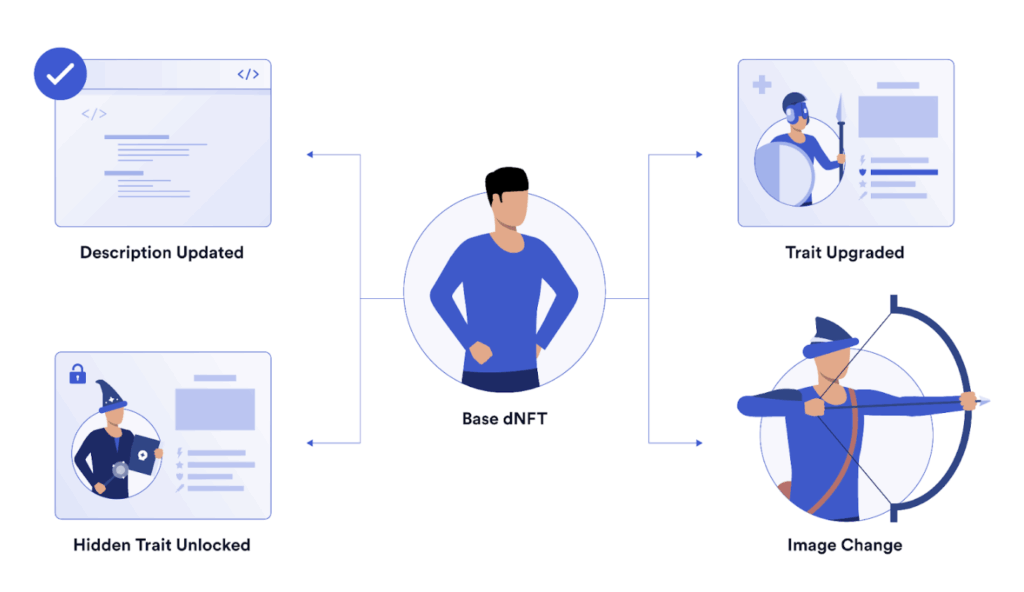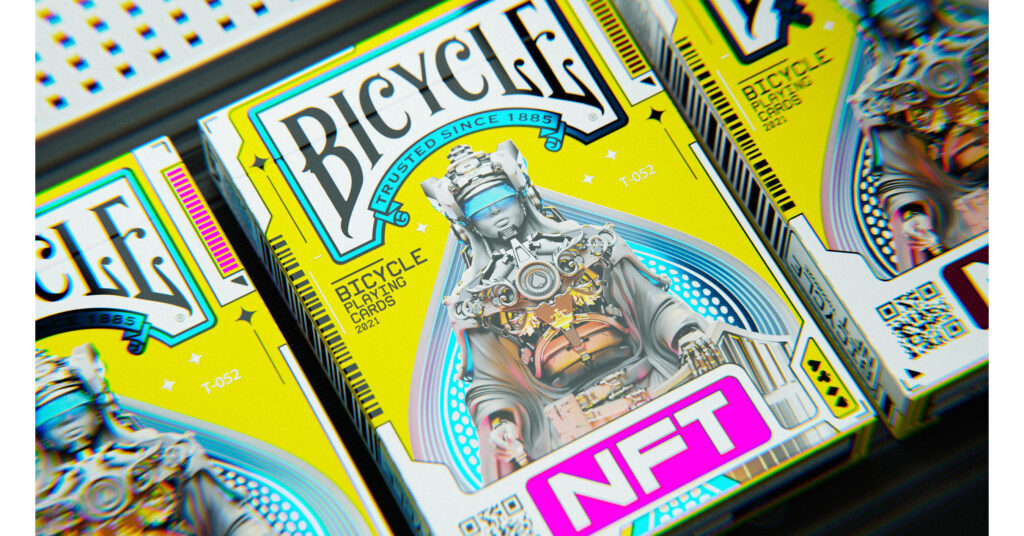What is a blockchain?
A blockchain is an immutable ledger—a database of transactions—that is updated and shared across many computers in a network. It facilitates the process of recording transactions and tracking assets; each new set of transactions added to the digital ledger is known as a “block.” As a unit of data stored on a blockchain digital ledger, an NFT, or non-fungible token, is essentially a certificate of ownership or authenticity. Non-fungible tokens (NFTs) have a wide range of use cases, including but not limited to: digital art, ownable items for games, tokenizing real-world assets, proving online identity, gating access to content, and ticketing. Since NFTs are not merely static digital records of authenticity but programmable assets, brands have the opportunity to implement an NFT royalty standard, encoding a small fraction of value capture for each resale.

What is a Non-Fungible Token (NFT)?
In economics, money is a fungible asset. It has units and can be easily interchanged (such as swapping a $50 for 5 $10s or a $5 bill for another $5 bill) without losing or gaining value. Fungible assets also include gold, cryptocurrency, and shares.
A non-fungible asset, on the other hand, is a one-off such as a trading card. While a trading card can be duplicated, the original maintains its intrinsic value, as replicas lack the same worth. Creators can transform their works into tokenized digital assets by minting them as non-fungible tokens (NFTs), providing verifiable proof of ownership and authenticity for one-of-a-kind creations. Moreover, non-fungible tokens can be minted for tangible assets such as tarot cards, enabling these real-world items to be represented and traded digitally as tokenized assets. NFTs enable us to share our non-digital lives more expansively and authentically in our digital spaces. By providing a digital seal of authenticity for physical items, NFTs foster seamless trust in peer-to-peer resale markets and empower brands to partake in the associated value capture.

What is a Dynamic NFT?
Innovative applications in the gaming industry necessitate the use of non-fungible tokens (NFTs) that are dynamic and decentralized. Dynamic NFTs are those that possess the capability to modify their on-chain data in response to specific events occurring either on-chain or even in the real world. Dynamic NFTs that represent an image can undergo visual transformations, such as changing colors, shapes, or even attaining an entirely new appearance, in response to events occurring on the blockchain or in the real world.

In-Game Assets
Blockchain technologies enable the recording of transparent and immutable transactions involving in-game items or currencies. Blockchains allow for the monetization of gameplay, enabling players to acquire virtual items or resources, and these in-game assets can then be sold to other users. In many current gaming experiences, players have the capability to accumulate virtual currencies or receive randomized digital assets of varying rarity and value through the completion of in-game activities. Some publishers are utilizing the monetization capabilities of blockchain gaming as a marketing tactic to attract early adopters, promising real-world value by engaging with blockchain-based games. Blockchain technology facilitates a player-driven economy where digital assets can be sold and traded, representing an evolution from the traditional business-to-consumer marketplace typically employed by games and driven by microtransactions. This provides value to gamers, allowing them to sell items they no longer use, which gives new life to other players in the ecosystem.

Phygital Tarot NFTs
A phygital NFTs is a non-fungible token that has a digital and physical component to its utility. The blockchain confirms proof of ownership, the NFT includes interactive elements, and transfers and provenance can be tracked digitally.
Akasha will facilitate the creation of phygital Tarot NFTs. Akasha will partner with Cartamundi to produce physical tarot cards with QR codes, and in working with Eon, a Digital Product Cloud, will generate Digital IDs that will be added to the NFT metadata of its digital twin tarot card.

The Web3 Future: Transforming Art into Digital Assets
When Akasha launches, digital artists will be able to publish their works on the Akasha blockchain. Once the cards exist in Akasha’s digital library, onboarding them as phygital NFTs will become a technical rollout—not a creative bottleneck.
The 78 archetypes of tarot will add richness to gameplay through new symbolism. Each digital artist will develop symbols aligned with the comprehensive set of meanings Akasha has established for each archetype. These symbols will deepen in complexity over time as collectors engage with each card and uncover meaningful coincidences in their daily lives, creating a truly practical tool for personal development.

